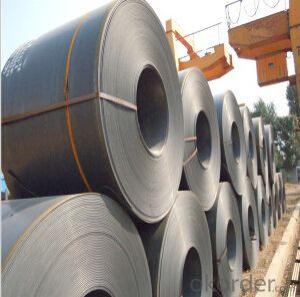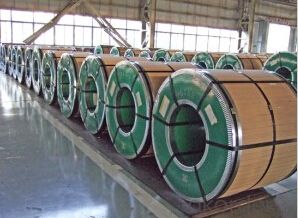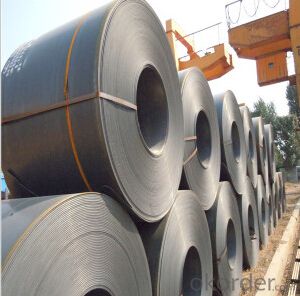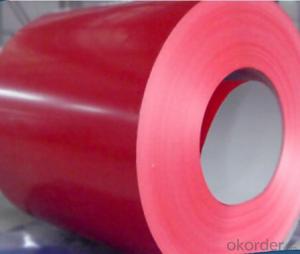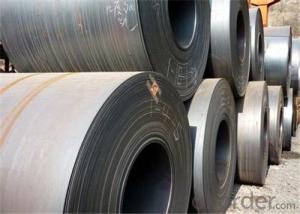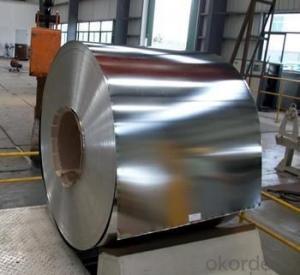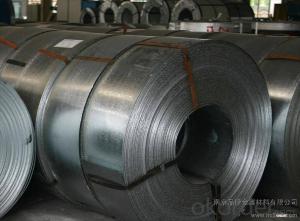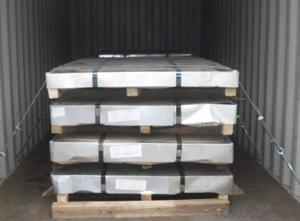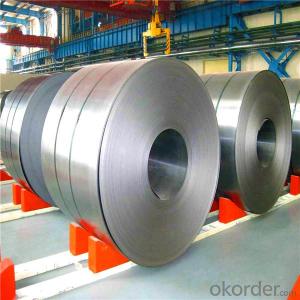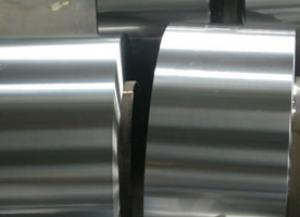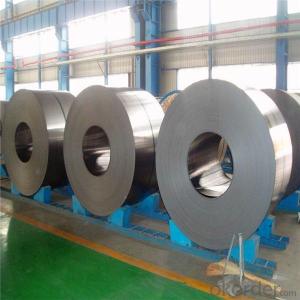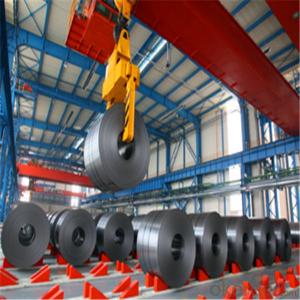Cold Rolled Galvanized Steel Coil for Construction
- Loading Port:
- Tianjin
- Payment Terms:
- TT OR LC
- Min Order Qty:
- 25 m.t.
- Supply Capability:
- 10000 m.t./month
OKorder Service Pledge
OKorder Financial Service
You Might Also Like
description:
Surface Treatment:Coated
Technique:Cold Rolled
Standard:ASTM, JIS, GB, AISI, DIN, BS
Steel Grade:Q195
Width:914, 1000, 1200, 1219, 1220, 1250
Export Markets:Global
Additional Info.
Trademark:STW
Packing:Sea Worthy Packing
Standard:0.2mm to 1.2mm
Origin:China
Production Capacity:10000 Tons Per Month
Product Description
Fit for world's standard (ASTM, JIS, EN)
Yeild strength: 235mpa to 550mpa
Width: From 600mm to 1250mm
Thickness: From 0.2mm to 1.2mm
Coating: AZ50, AZ100, AZ150
Other requirements fit for customer's demands
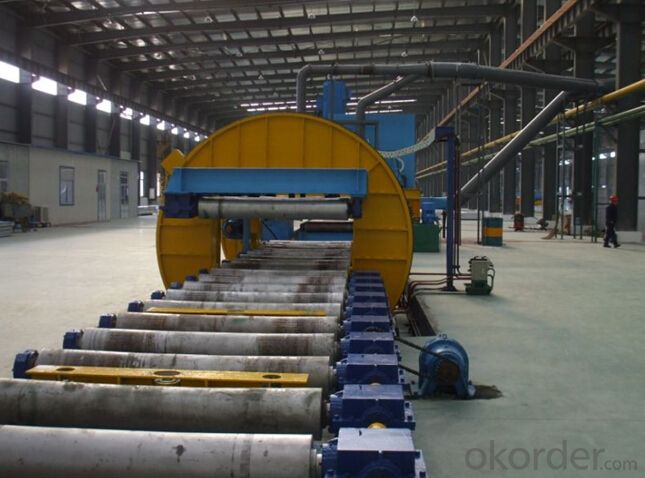
FAQ
1.What's your MOQ?
25MT, it is for one container.
2.Do you have QC teams?
Yeah, sure, our QC team is very important, they will keep the quality control for our products.
3. What's your normal delivery time?
Our delivery time about 10-20days for standard sizes, if you have other requirements like hardness and width ,it is about 20-40days. But don't worry ,we also try our best for the delivery time ,because time longer and our cost is higher.
4.Are the products tested before shipping?
Yes, all of our PPGI and GI was qualified before shipping. We test every batch every day.
- Q: Whats the difference in composition? When LTCS is used generally?Whats the temperature range, that these materials can be used? Is there any relation between Killed carbon steel, LTCS, stainless steel, carbon steel(normal)? How to categorise/classify these?Thankyou very much in advance..
- Low Temperature Carbon Steel
- Q: What are the common quality control measures for steel coils?
- Some common quality control measures for steel coils include inspection for surface defects such as scratches, dents, or unevenness, checking for dimensional accuracy and thickness consistency, testing for mechanical properties such as tensile strength and hardness, conducting chemical composition analysis, and ensuring proper packaging and labeling of the coils.
- Q: Are steel coils used in electrical equipment manufacturing?
- Yes, steel coils are commonly used in electrical equipment manufacturing. They are often used in the construction of transformers, motors, generators, and other electrical devices. The steel coils provide structural support, magnetic properties, and efficient conduction of electricity, making them an essential component in electrical equipment manufacturing.
- Q: How are steel coils used in the production of electrical systems?
- Steel coils are used in the production of electrical systems as they serve as the key component in the construction of transformers and electric motors. These coils are wound with insulated copper wire and when an electric current passes through them, they generate a magnetic field that enables the conversion of electrical energy into mechanical energy or vice versa.
- Q: What are the common coil sizes available for steel coils?
- The common coil sizes available for steel coils vary depending on the specific industry and application. However, there are several standard coil sizes that are commonly used across different sectors. These include 36-inch, 48-inch, 60-inch, and 72-inch coil widths. In terms of coil diameter, the most common sizes are typically between 20 inches and 24 inches. Additionally, coil weights can range from a few thousand pounds to several tens of thousands of pounds, depending on the type of steel being coiled and the intended use. It is important to note that these sizes may vary among different steel manufacturers, so it is always advisable to consult the specific supplier or industry standards to determine the available coil sizes for a particular steel product.
- Q: How do steel coils contribute to the automotive aftermarket?
- Steel coils contribute to the automotive aftermarket by serving as a crucial raw material for manufacturing various components used in vehicles. These coils are responsible for providing strength, durability, and structural integrity to parts like body panels, chassis components, suspension systems, and exhaust systems. Additionally, steel coils are also used in the production of aftermarket accessories such as bumpers, grilles, and custom body kits. Their availability and versatility make steel coils an essential resource for the automotive industry, enabling the production of high-quality aftermarket products that enhance the performance and aesthetics of vehicles.
- Q: Is there alloys in low carbon steel or non
- Hello, okorder Hoping this can help you. :-)
- Q: I know the law regarding selling steel core ammo, but is it possible to buy a steel core bullet and load it yourself?
- I'm a reloading trainer. This you can do - however - you are going to not be capable to re-use the powder considering the fact that you have no idea what it's, and, what the difference is between the old bullets and your new ones. As you already know - even bullets of the identical weight can have a gigantic change in stress kind one brand to one more. You're going to need to slowly work up a load, identical to a ordinary reloading load. Pulling inexpensive bullets and re-using the manufacturing unit primed case is in reality beautiful normal. I most commonly take the FN 5.7x28mm and pull the Horndy 40gr manufacturing unit - then insert the 69gr into them. The powder is discarded and i re-use those 40gr ones in my 223/5.56mm varmint gun.
- Q: i want a good modern carbon steel (not stainless) knife. trying to keep it under 50$ also nothing to gruesome just a small pocket knife. thank you
- Well, okorder /... They did make other folders in M2 steel, but the thing is those are out of production and the cost is very high. Spyderco made M4 steel folder knives, and so did Benchmade. Although,both are outside of 50$ budget. I guess Opinels are best option.
- Q: Bronze came before steel, right? thanks
- Bronze The earliest surviving iron artifacts, from the 5th millennium BC in Iran and 2nd millennium BC in China, were made from meteoric iron-nickel. By the end of the 2nd millennium BC iron was being produced from iron ores from South of the Saharan Africa to China. Steel (with a smaller carbon content than pig iron but more than wrought iron) was first produced in antiquity. New methods of producing it by carburizing bars of iron in the cementation process were devised in the 17th century. In the Industrial Revolution, new methods of producing bar iron without charcoal were devised and these were later applied to produce steel. In the late 1850s, Henry Bessemer invented a new steelmaking process, involving blowing air through molten pig iron, to produce mild steel. This and other 19th century and later processes have led to wrought iron no longer being produced. The earliest tin-alloy bronzes date to the late 4th millennium BC in Susa (Iran) and some ancient sites in China, Luristan (Iran) and Mesopotamia (Iraq).
Send your message to us
Cold Rolled Galvanized Steel Coil for Construction
- Loading Port:
- Tianjin
- Payment Terms:
- TT OR LC
- Min Order Qty:
- 25 m.t.
- Supply Capability:
- 10000 m.t./month
OKorder Service Pledge
OKorder Financial Service
Similar products
Hot products
Hot Searches
Related keywords

